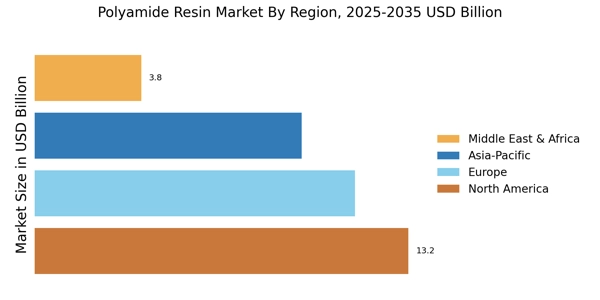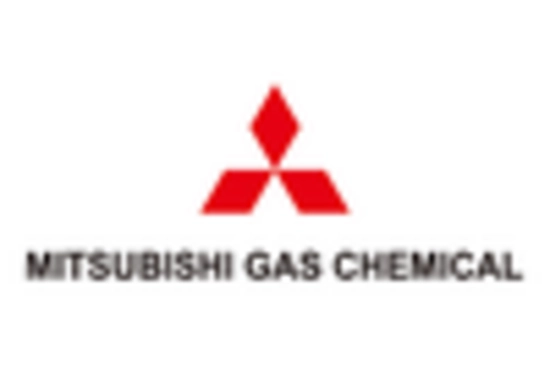Rising Demand in Automotive Sector
The automotive sector is experiencing a notable surge in demand for polyamide resins, primarily due to their lightweight and high-performance characteristics. Polyamide resin market players are increasingly focusing on developing materials that enhance fuel efficiency and reduce emissions. In 2025, the automotive industry is projected to account for approximately 30% of the total polyamide resin consumption. This trend is driven by the need for manufacturers to comply with stringent environmental regulations and consumer preferences for sustainable vehicles. As a result, polyamide resins are being utilized in various automotive applications, including engine components, fuel lines, and interior parts, thereby propelling the growth of the polyamide resin market.
Expansion of the Packaging Industry
The packaging industry is undergoing significant transformation, with a marked shift towards sustainable and high-performance materials. Polyamide resins are increasingly being adopted in packaging applications due to their superior barrier properties and mechanical strength. In 2025, the packaging sector is projected to account for approximately 20% of the polyamide resin market. This growth is fueled by the rising consumer demand for eco-friendly packaging solutions and the need for materials that can extend shelf life. As companies strive to meet sustainability goals, the adoption of polyamide resins in flexible and rigid packaging solutions is likely to enhance the overall growth of the polyamide resin market.
Increasing Focus on Renewable Resources
The polyamide resin market is witnessing a paradigm shift towards the utilization of renewable resources. As sustainability becomes a central theme across industries, manufacturers are exploring bio-based polyamide resins derived from renewable feedstocks. This shift is expected to gain momentum in 2025, with bio-based polyamides projected to capture a larger share of the market. The growing consumer awareness regarding environmental issues and the push for circular economy practices are driving this trend. Consequently, companies are investing in research and development to create innovative bio-based polyamide solutions, which could potentially reshape the landscape of the polyamide resin market.
Innovations in 3D Printing Technologies
The advent of advanced 3D printing technologies is creating new opportunities for the polyamide resin market. As additive manufacturing gains traction across various sectors, the demand for polyamide resins is expected to rise significantly. In 2025, the 3D printing segment is anticipated to contribute around 15% to the overall polyamide resin consumption. The versatility of polyamide resins in producing complex geometries and lightweight components makes them particularly appealing for industries such as aerospace, healthcare, and consumer goods. This trend indicates a shift towards more customized and efficient production processes, thereby fostering the growth of the polyamide resin market.
Growth in Electronics and Electrical Applications
The electronics and electrical sectors are witnessing a robust growth trajectory, which is significantly impacting the polyamide resin market. With the increasing demand for lightweight and durable materials in electronic devices, polyamide resins are becoming the material of choice for manufacturers. In 2025, it is estimated that the electronics sector will represent around 25% of the total polyamide resin market. The properties of polyamide resins, such as excellent thermal stability and electrical insulation, make them ideal for applications in connectors, circuit boards, and housings. This growing reliance on polyamide resins in electronics is likely to continue, further driving the expansion of the polyamide resin market.


















Leave a Comment